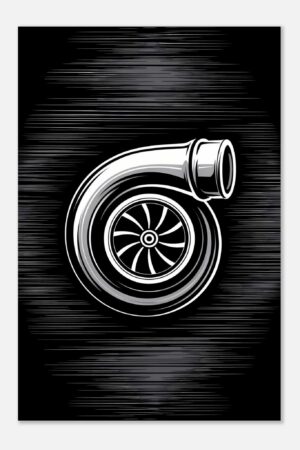Estimate power gains from adding boost pressure to your engine
Different induction types have different efficiency factors
How much boost pressure will be added
Understanding Boost and Horsepower: The Science Behind the Numbers
When it comes to forced induction, one of the most common questions car enthusiasts ask is: "How much power will I gain from adding boost?" This calculator helps answer that question by providing realistic estimates based on established principles of forced induction performance.Boost pressure directly correlates with the amount of air being forced into your engine's combustion chambers. More air (when matched with proper fuel) means more powerful combustion and thus more horsepower. However, the relationship isn't purely linear—it depends on numerous factors including engine size, efficiency, and induction type.
The Relationship Between PSI and Power
Our calculator uses a percentage-based approach to estimate power gains. This approach recognizes that:
- Larger engines typically gain more absolute horsepower from the same boost increase
- The efficiency of power conversion varies between turbochargers and superchargers
- Base engine characteristics significantly influence potential gains
For turbocharged applications, we estimate approximately 9% additional power per PSI of boost for every 100 base horsepower. For superchargers, which have different efficiency characteristics, we use approximately 7% per PSI per 100 base horsepower.
How to Use the Boost Calculator
Using our calculator is straightforward:
- Enter your current engine power - This is your baseline, the power your engine currently produces
- Select your power unit - Choose between horsepower (HP) or kilowatts (KW)
- Choose your forced induction type - Select either turbocharger or supercharger
- Enter the boost pressure - Input how much boost pressure (in PSI) you plan to add
- View your results - The calculator instantly shows both your power gain and new total power
The calculator automatically updates as you change values, allowing you to experiment with different scenarios quickly.
Turbochargers vs. Superchargers: Understanding the Differences
Our calculator uses different formulas for turbochargers and superchargers because these systems have fundamentally different characteristics:
Turbochargers
Turbochargers harness exhaust gas energy to drive a turbine that compresses intake air. They typically:
- Provide better efficiency at higher RPMs
- Produce more power per PSI at higher boost levels
- Have more variance in power delivery (turbo lag followed by surge)
Superchargers
Superchargers are mechanically driven directly from the engine's crankshaft. They generally:
- Deliver more consistent power across the RPM range
- Provide immediate throttle response
- Have slightly lower overall thermal efficiency
These differences explain why our calculator applies different coefficients to each system type.
Practical Considerations for Increasing Boost
Before increasing boost on your vehicle, keep these important factors in mind:
Supporting Modifications
Additional boost often requires supporting modifications to maintain reliability:
- Upgraded intercooling to manage intake temperatures
- Improved fuel delivery system to maintain proper air/fuel ratios
- Professional ECU tuning to adjust timing and fuel mapping
- Potential internal engine upgrades for significant boost increases
Real-World Variations
Actual power gains may differ from estimates due to:
- Environmental conditions (temperature, humidity, altitude)
- Engine condition and maintenance
- Quality and efficiency of your forced induction components
- Tune quality and engine management calibration
The Science Behind Our Calculator
Our power estimation formula is based on well-established engineering principles and real-world dyno testing data. We use a percentage-based approach rather than a simple linear formula because:
- Engine size matters - A 2.0L engine and a 5.0L engine will gain different absolute power from the same boost increase
- Baseline matters - Higher compression engines often respond differently to boost than lower compression ones
- Diminishing returns - As boost increases, efficiency typically decreases due to heat and other factors
By accounting for your current power level in the calculation, our formula provides more realistic estimates across a wide range of engines and setups.
Calculating the Numbers
For a 300 horsepower turbocharged engine adding 7 PSI of boost, our calculator estimates:
- Power gain = (300/100) × (7 × 9) = 3 × 63 = 189 HP
- Total power = 300 + 189 = 489 HP
This calculation represents an estimated maximum theoretical gain under ideal conditions. Real-world results will vary based on your specific setup, tuning, and supporting modifications. You might also be interested in our torque to horsepower calculator or 0-60 time as well.






